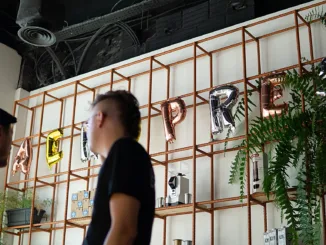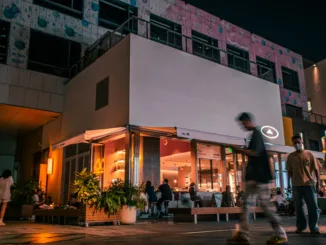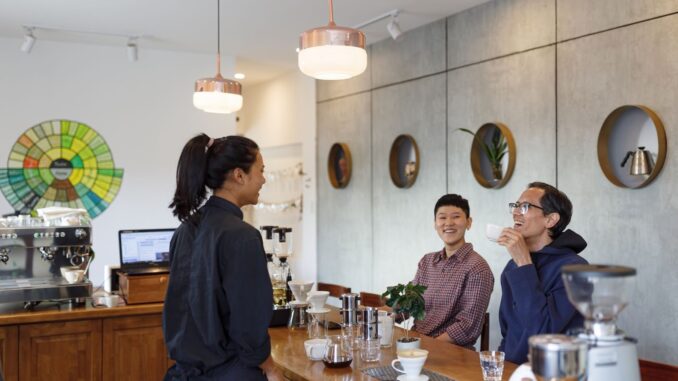
We close our feature on the growth of specialty-coffee growing and drinking in Vietnam.
BY MOLLY HEADLEY
SPECIAL TO BARISTA MAGAZINE ONLINE
Photos courtesy of Mervin Lee
From the editor: Yesterday we began a feature on specialty coffee in Vietnam in regards to both growing and brewing it. Today, we finish by talking about where arabica grows in Vietnam and why it stays in the country.
Arabica makes up about 6% of the coffee plants in Vietnam, and many are tended by individuals who care deeply about the coffee-growing process. Arabica varieties have also been introduced into the grower’s lexicon in the high-altitude Central Highlands, including fast-growing Catimor and small batches of Typica, and Bourbon. Recent progress has seen trials of hybrid varieties such as Starmaya, Centroamericano and a trending Heirloom Ethiopian-Vietnamese Catimor hybrid known as THA1, developed by the country’s Western Highlands Agriculture & Forestry Science Institute.
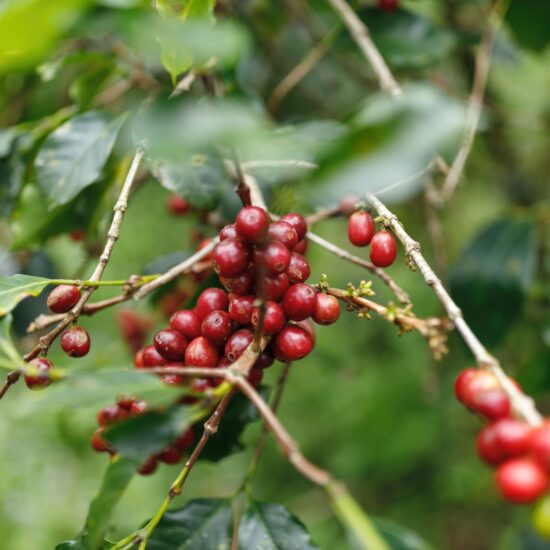
One of the best-known heirloom Vietnamese coffee farms has been run by the K’Ho ethnic group on Langbiang Mountain since the 19th century. K’Ho Coffee, founded in 2012, strives to make growing and specialty production in Vietnam a more environmentally friendly endeavor—as well as one that is economically viable for the growers themselves. Other specialty producers in the region such as Zanya Coffee, Culture Bean, and Lang Biang Coffee Project are also working to create the best possible growing conditions for their crops and farmers.
And the work has paid off. Cupping scores for general arabica in Vietnam usually come in at around 60, whereas specialty arabicas are now scoring above 80, entirely because of the love and care that is put into growing, harvesting, and roasting them.
Why It’s Difficult to Access High-quality Beans Outside of Vietnam
“Specialty growers and producers are really orienting themselves more towards the domestic market. They can just stick it on a bus and overnight it to the roaster,” says Will Frith, an unofficial ambassador of Vietnamese coffee, “in contrast to all the logistics necessary for export.”
Domestic buyers tend to be the micro and nano roasters that have propagated throughout the country, bringing with them whispers of fruity or nutty flavor notes, farm-to-cup transparency, and the social aspect of just making a really good product and sharing it with the community.
This illustrates the increasingly overlapping relationships between specialty cafés, roasters, and quality-focused growers in Vietnam. The proximity of the cafés in places like Saigon and Hanoi to the coffee-growing areas in the Central Highlands makes it possible to simply head out to the farms for the weekend and have a hand in the process.
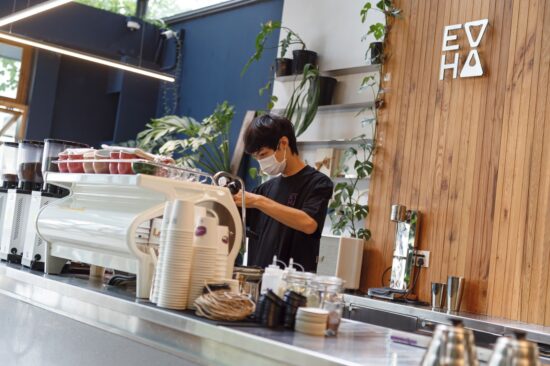
Despite the high domestic demand, a few exporters also concentrate on Vietnamese specialty coffee, such as VN Beans in the United States and Lang Biang Coffee Project, which sells to the Japanese and Australian markets.
Introducing Your New and Improved Ca Phe Sua Da
Vietnamese coffee drinks such as ca phe sua da (dark coffee with sweetened condensed milk) are famous throughout the world, and for good reason: Done well, they can be rich and intense, packing a punch of sweetness that can take you easily from morning to evening on a highly caffeinated wave. Unfortunately, many of these drinks are made with low-quality robusta coffee. In response, specialty cafés in Saigon are playing with what the city’s coffee drinkers expect in their cups and transforming it into a better experience.
Tran Lê Minh Trúc, founder of Every Half Coffee Roasters in Saigon, spent the COVID lockdown delivering freshly roasted beans to individuals at home. He says, “The coffee market in Saigon is moving very fast. It’s very different from 10 years ago. 10 years ago people didn’t really know what a barista was. Now people are starting to drink ca phe sua da made with espresso machines. They accept the smoother flavor of arabica.”
Frith agrees: “The arabica market is definitely growing. The middle class is growing and they’re seeking novelty and differentiation. Gen Z is very aware of what’s happening around the world. They want to know about flavor notes and processing and where the coffee came from.”
Street-level coffee is still comfort food in Vietnam. It’s the benchmark for what coffee is supposed to taste like for many Saigonese. But that doesn’t mean that specialty coffee can’t work with different tastes. Many specialty cafés in Saigon feature traditional Vietnamese coffee beverages on their menu upgraded with top-quality beans, as well as locally inspired flavors like pandan-infused lattes. In other words, it’s not about erasing Vietnam’s coffee culture. At least, to the point that everyone in Saigon will toss their phins in favor of toting around take-away cappuccinos like luxury accessories. It’s about making Vietnamese coffee better all around, from bean to roast to cup.
Vietnam’s third-wave coffees don’t need to stop at the borders. When asked where he sees Saigon’s coffee culture in 10 years, Tran of Every Half “hopes for international knowledge about the specialty coffees in Vietnam, starting with green beans. The quality is going up and now it’s time to export more and raise the image of Vietnamese coffee worldwide.”
ABOUT THE AUTHOR
Molly Headley (she/her) is a freelance journalist who writes about the F&B industry and arts & culture. She’s lived in the countryside of Idaho, an arts conservatory in Michigan, the gritty-glitz of L.A., poetic Paris, foodie London, and exhilarating Ho Chi Minh City. Travel has always driven her next move, but home is wherever she can sit with her laptop and a really good cup of coffee. In addition to writing, she currently teaches cross-cultural communication and storytelling at Leonardo da Vinci University in Paris.



